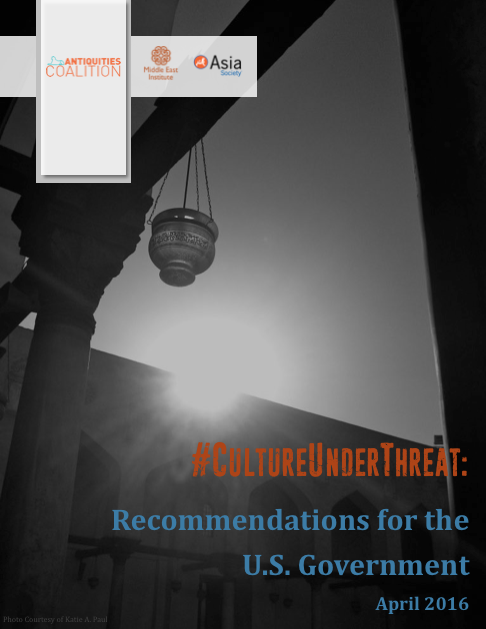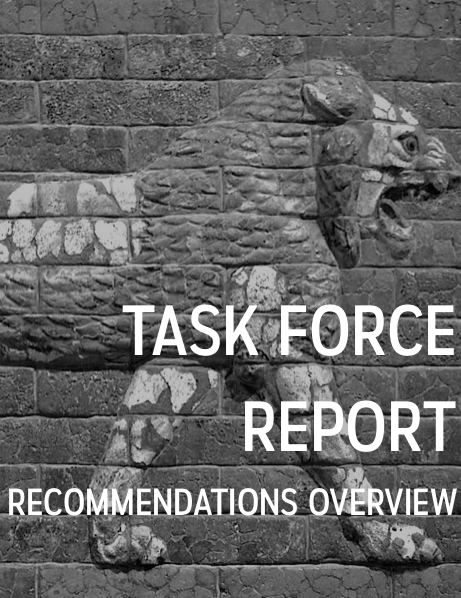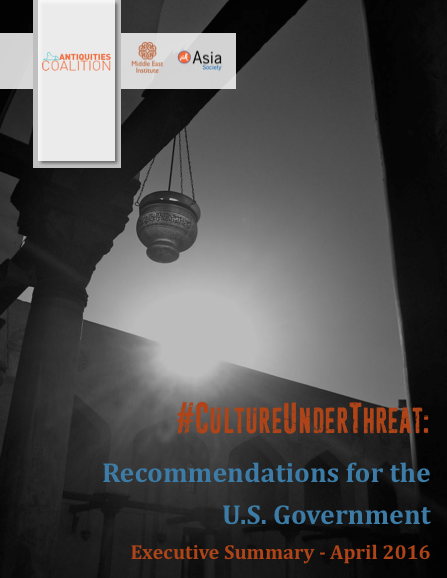The Antiquities Coalition #CultureUnderThreat Task Force Report
The #CultureUnderThreat Task Force was convened by the Antiquities Coalition, Asia Society, and Middle East Institute to explore solutions to this growing crisis and serve as an ongoing resource to policy makers. The Task Force builds upon the 2015 Cairo Conference, where ministers from ten key MENA countries agreed to take steps against cultural racketeering. Their collective action plan—the Cairo Declaration—was reinforced by the #CultureUnderThreat Forum held on the margins of the United Nations General Assembly in September 2015.
The recommendations that follow begin with actions that the Task Force believes the United States government can and must take to end cultural crimes. They are also intended to serve as a guide for leaders across the international community and in the private sector. It is important to recognize that the success of these recommendations will depend on adequate funding being made available, not only for implementation, but for additional research to help us better understand the illicit trade in antiquities.
Ending the cultural crisis in the Middle East and North Africa is a national security and human rights imperative. Adoption of these recommendations would go far in addressing this crisis. The Task Force stands ready to assist in this effort.



























